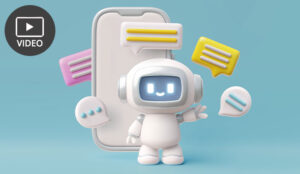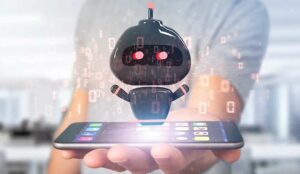Brendan Dykes of Genesys predicts that the combination of humans and cobots will significantly change the contact centre of the future.
We live in a business world that, too often, sees how we engage with prospects or customers in clear boxes — it’s all very black and white.
What I mean is that we often design our processes and technology with a view that prospects and customers will either self-serve or be assisted.
We take the same approach when it comes to how we handle work within the customer services or sales. A task to assist a prospect or customer is handled either by a human or it is automated.
But sometimes these boundaries aren’t so clear cut. Sometimes automation and human assistance need to work together to complete the task.
For example, what if an automation and the human touch could work seamlessly together?
What we’re looking at is a blended approach in which humans and bots work together — self-service applications and agents assisted by bots. We call these cobots.
The term “cobot” was first used in the 1990s by J. Edward Colgate and Michael Peshkin from Northwestern University.
A US patent filing in 1997 described cobots as: “An apparatus and method for direct physical interaction between a person and a general-purpose manipulator controlled by a computer.”
It’s a very common occurrence in manufacturing, particularly in dangerous environments.
We can bring the same approach to bear within sales and service. Take an everyday interaction with any business: You might start online with self-service, need assistance through a bot that then passes you to an agent who is being assisted with knowledge and insights by a bot.
Then, you’re left to finish the transaction through self-service, which might again use a bot to assist you. This is an example of humans and cobots working together to assist both customers and agents.
This doesn’t completely replace the human interaction. There are many tasks for which the human will be the best resource to help a customer. These include complex or non-linear transactions, ones where empathy and sympathy are needed, and ones where the (co)bot just isn’t working.
The Agent Take on Cobots
Studies show that agents are on board with this paradigm. According to a UK study conducted by Genesys, nearly two-thirds of employees value new technological tools, such as artificial intelligence (AI), in the workplace.
In fact, 64% of UK employees say it makes them more effective and allows them to focus on other tasks.
These agents don’t expect the technology to become a threat anytime soon either. 59% don’t believe AI or bots will take their jobs within the next 10 years.
In fact, employees see AI as pivotal to business success — with more than one-fifth saying they believe AI or bots will be crucial to their companies’ ability to stay competitive in the future.

Brendan Dykes
It’s not black-and-white service delivery; it’s many shades of automation and human engagement, depending on what’s needed to deliver the best outcome. And it’s not (hu)man versus the machine; it’s human with the machine.
It’s a future where customer experience AI and bots evolve to become true customer engagement cobots.
Author: Robyn Coppell
Published On: 30th Sep 2019 - Last modified: 2nd Oct 2019
Read more about - Guest Blogs, Genesys



















